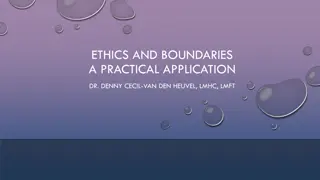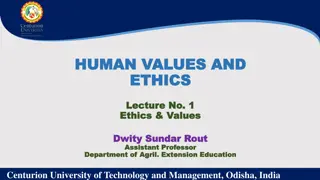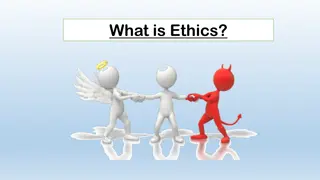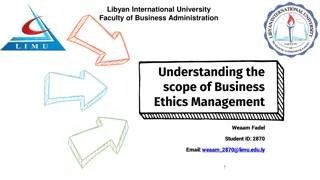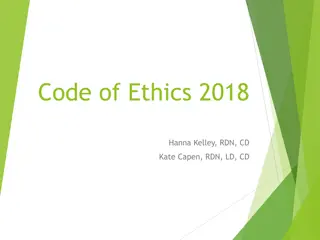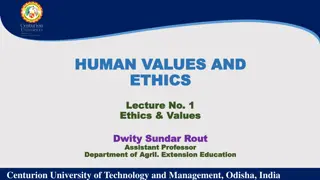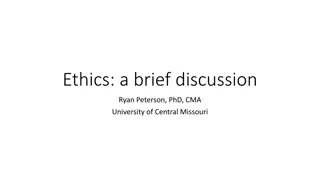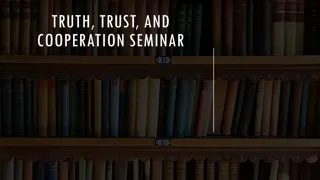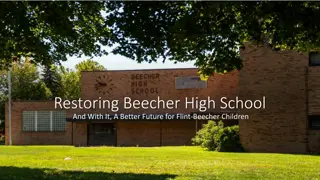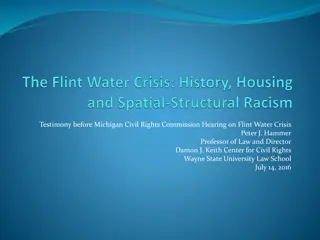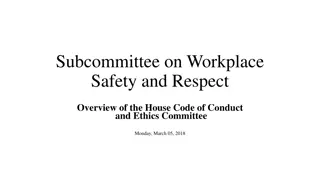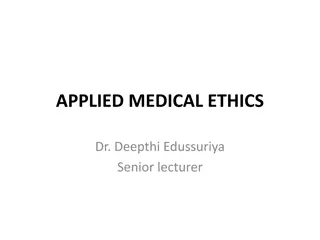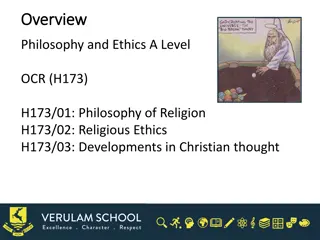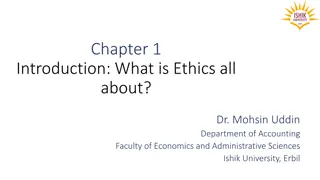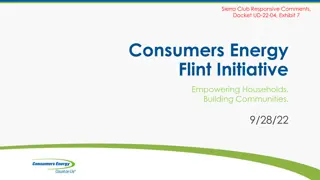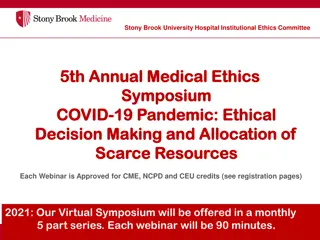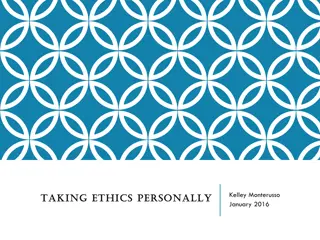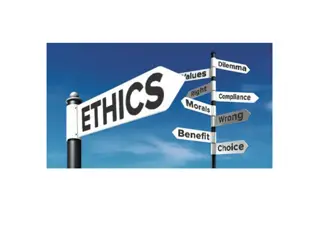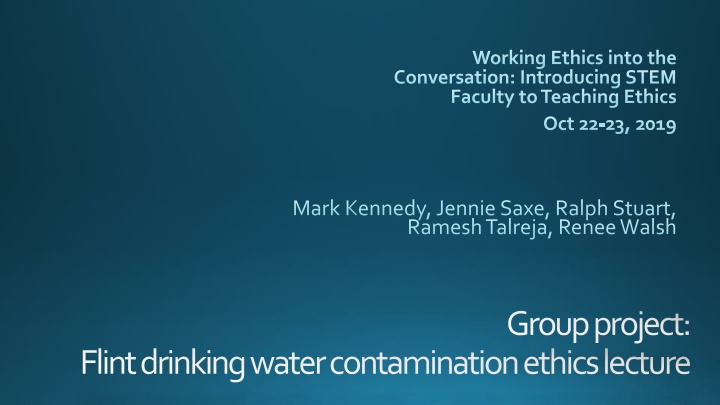
Exploring Ethics in STEM Education Through the Flint Water Contamination Case Study
Venture into the realm of ethics in STEM education by delving into the real-world case of the Flint water contamination. This educational initiative aims to introduce STEM faculty to teaching ethics, focusing on codes of conduct violations that led to the Flint crisis. Through interactive activities like role-playing and discussion, participants will analyze ethical decision-making processes and communication strategies in engineering, ultimately recommending approaches to address ethical dilemmas in the public sector.
Download Presentation

Please find below an Image/Link to download the presentation.
The content on the website is provided AS IS for your information and personal use only. It may not be sold, licensed, or shared on other websites without obtaining consent from the author. If you encounter any issues during the download, it is possible that the publisher has removed the file from their server.
You are allowed to download the files provided on this website for personal or commercial use, subject to the condition that they are used lawfully. All files are the property of their respective owners.
The content on the website is provided AS IS for your information and personal use only. It may not be sold, licensed, or shared on other websites without obtaining consent from the author.
E N D
Presentation Transcript
Working Ethics into the Conversation: Introducing STEM Faculty to Teaching Ethics Oct 22-23, 2019 Mark Kennedy, Jennie Saxe, Ralph Stuart, Ramesh Talreja, Renee Walsh Group project: Flint drinking water contamination ethics lecture
Real Case Study: Flint Drinking Water Contamination https://www.mlive.com/news/flint/2019/10/flint-mayor-karen- weaver-talks-water-crisis-recovery-at-state-of-city- address.html
Learning objectives Summarize elements of ASCE and NSPE ethics codes Identify the ethics violations that led to the contamination of the drinking water in Flint, Michigan Explain the role of communication in ethical decision making Recommend methods for addressing ethics issues in public sector engineering
Assumptions 75-minute class period 25 students in class Pre-class homework has been assigned and completed: Find and read two news articles from two different sources about the contamination of drinking water in Flint, Michigan Find, read, and cite (in IEEE or APA format) 2 peer reviewed articles about the Flint, Michigan water contamination. Search on the databases Engineering Village (Compendexand Inspec) or Scopus. Review ethics codes: ASCE, NSPE
Class structure Activity Time allotted (min) 10 10 30 (10 + 20) 15 10 Welcome, review of learning objectives, warm-up Introduction to activity Activity (2 parts) Report-outs from activity Discussion wrap-up, reflection paper
Warm-up: concept map Write 3 words on the board related to the case study you read Draw lines to connect any concepts which go together Communication Public health Professional responsibility
Group activity: role-playing Divide students into 5 groups of 5 Students will be assigned roles (5 students to each role) Water treatment plant manager Water treatment plant supervising engineer Water treatment plant operators Emergency financial manager Health department
Group activity: role-playing Meet with your counterparts (like roles) for 10 minutes Discuss what your ethical responsibilities are and identify if/how those responsibilities may have been violated Use the NSPE and ASCE codes of ethics as a guide Then split into groups comprised of one of each role Discuss in this diverse group what ethical issues you noted These groups will report out on their discussions
Discussion wrap-up Instructor has a set of discussion questions prepared, including: What could you have done differently as supervising engineer? What about a conflict between fiduciary duties of financial manager and engineering codes of ethics? Are there any gaps in the ethics codes? Additional points on class discussion: Instructor would describe why stakeholders were selected for this exercise (application of professional codes of ethics) Instructor should discuss additional stakeholders (e.g., city residents) who should be included in decision-making processes
Learning outcomes Students have the ability to apply ethics codes to real-world situations Students can identify and examine real-world situations for ethical violations
Reflection paper: assessment Provide a reflection question and ask students to write a brief response at the end of class Examples: How could you ensure ethical decision-making in public sector engineering projects? What role does communication play in ethical decision-making?

